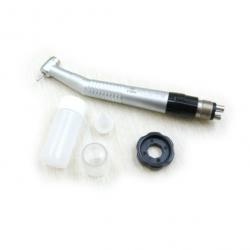- Accueil
- service.zetadental.fr@gmail.com
-
- E-mail : service.zetadental.fr@gmail.com
- Aide Directe
- Favori
- Panier:(0)
- Aide
fr.ishinerdental.com, le plus grand fournisseur en ligne du matériel dentaire pour tous les pays et toutes les régions .
- Votre position:
- Articles
- Santé Dentaire
- Preventive, Basic and Major dental services.
Preventive, Basic and Major dental services.
We have also a large number of English customers, and I have read an very good article on other website. Today I'll share it to all of you. Thanks to the original writer.
Dental insurance policies typically group covered dental procedures into categories that are referred to as: A) Preventive, B) Basic and C) Major dental services.
The category to which a procedure has been assigned dictates the amount of coverage (level of benefits) that the policy provides.
You'll need to refer to your policy for exact details.
Please note, while the information we present on this page is typical of most dental insurance plans, yours may categorize procedures or provide benefits differently. In all cases, for an accurate and definitive determination about coverage, you'll need to check the terms and conditions of your specific policy. (Ask your dentist, read your plan's handbook, or call your company).
A) Preventive dental services.
In most cases, you'll likely find that your benefits for Preventive (and Diagnostic) dental services are relatively high.
With most indemnity insurance and preferred-provider (PPO's) plans, you'll probably find that your coverage ends up being least about 80% of your dentist's bill (using either a "UCR" or "Table of Allowances" calculation - see below). And in many cases it may even run 100%.
You'll need to check your policy to see if its deductible must be met before you receive benefits for these procedures. In many cases you will not.
With an HMO plan, you can expect that you'll have little or no copayment when Preventive dental services are performed.
List of Preventive / Diagnostic dental services.
dental examinations, cleanings, x-rays, fluoride treatments, space maintainers, dental sealants
Ideally your plan will provide these services at least at these frequencies.
Dental examinations - twice per year.
Bite-wing x-rays - once per year.
Teeth cleanings - twice per year.
Full mouth x-ray series - once every three years.
Additional preventive dental care for children and adolescents.
Topical fluoride treatments - twice per year.
B) Basic dental services.
Basic services are typically those types of dental treatments and procedures that are relatively straightforward in nature and don't involve a significant laboratory expense for the dentist.
Most indemnity and PPO insurance plans end up covering Basic services at a rate of about 80%. Typically, benefits are not paid until the member has met their plan's deductible. With HMO plans, a modest copayment may be required when these services are performed.
List of Basic dental services.
amalgam dental fillings, composite fillings (white fillings), routine tooth extractions, root canal treatment, periodontal treatment such as scaling and root planing and (possibly) periodontal surgery, recementing dental crowns, (possibly) dental crowns
C) Major dental services.
The Major dental services category typically includes procedures and treatments that are relatively more complex in nature and often involve a dental laboratory expense. These services tend to be more costly than those found in the Basic category.
With indemnity and PPO insurance policies, the benefits provided for Major dental services typically run on the order of 50% of the procedure's cost, after the plan's deductible has been met. With HMO plans a copayment is typically required.
List of Major dental services.
dental crowns, dental bridgework, dental implants, removable partial dentures, complete dentures, orthodontic treatment
Calculating what your actual insurance benefits will be.
Just like with the information above, you'll need to look at your own policy to learn precisely how your benefits are calculated. In general, however, the following descriptions explain how dental insurance (indemnity) and PPO plans usually work.
A) Policies that calculate benefits using UCR fees.
Benefits that are based on procedure "UCR" fees ("Usual, customary, reasonable" fees) are calculated on a percentage basis. These calculations aren't quite as straightforward as you might expect, so if this is the type of policy that you have, you should use our link to learn more.
Some types dental procedures, such as Preventive and Diagnostic dental services (cleaning, x-rays), may be covered at a very high percentage (80 to 100%) of the UCR fee. Basic services (routine dental procedures) will be covered as a slightly lower percentage (50 to 80%). Major dental services, such as dentures and crown and bridge treatment, if covered, will typically be provided for at an even lower rate (50% or less).
You're responsible for paying your dentist the difference between what your insurance has paid and the actual cost of your treatment. Also, the amount of benefits that your insurance company pays will be limited by your policy's stated deductible and maximum benefits.
B) Policies that base benefits on a Table of Allowances.
Some insurance policies calculate their benefits using a fixed fee schedule termed a "Table of Allowances." This table is simply a listing of all covered dental procedures and that set dollar amount that the insurance company will provide as benefits when they are performed. Keep in mind, the amount of benefits paid will be limited by the policy's deductible and plan maximum benefits.
If you are considering a dental plan that uses a Table of Allowances, you should inquire as to whether the insurance company payments specified in the table will be accepted by the treating dentist as payment in full, or you will be expected to make up the difference between this fee and the dentist's regular charges by way of making a copayment (the more likely arrangement). There can be a very significant out-of-pocket difference for the patient between these two scenarios.
Ask your dentist's office staff for help in determining your benefits.
For the dental patient, calculating policy benefits can be very confusing. Don't hesitate to ask your dentist's staff for help or clarification (if it hasn't already been offered).
Of course, the ultimate authority on this issue is your insurance company. Your dentist can submit a predetermination form to them that details information about your proposed treatment plan. In response, they will send information stating what your expected benefits should be.
Tous Nos Produits
- Cire
-
- Brûleur à cire (1)
- Réchauffeur de cire (5)
- Couteau à cire (2)
- Équipement médical
-
- oxymètre de pouls (9)
- Moniteur ECG (4)
- Moniteur patient (10)
- Laboratoire
-
- Unité dentaire mobile (4)
- Machine à souder (3)
- MOTEUR D'IMPLANTOLOGIE (2)
- Malaxeur dentaire (3)
- Articulateur dentaire (4)
- Amalgamateur dentaire (6)
- Bec à gaz (2)
- Centrifugateur (1)
- Compresseur & Découpeur (2)
- Perceur dentaire (2)
- loupes dentaires (2)
- Machine à former (2)
- Vibrateur & Paralléliseur (4)
- Instruments rotatifs
-
- Turbine (48)
- Contre Angle (12)
- Instrument à LED (11)
- Moteur d'air (5)
- Pièce à main (5)
- Kit des instruments rotatifs (20)
- Rotor Dentaire (27)
- Fraises dentaires (16)
- D'autres Accessoires (6)
- Lampe à photopolymériser
-
- Lampe Halogène (2)
- Sans fil (31)
- Filaire (6)
- Filaire et sans fil (0)
- Double couleur lumière (0)
- Radiomètre intégré (0)
- Pour fauteuil dentaire (1)
- Guide Optique (2)
- Lunettes de Protection (1)
- D'autres
-
- Brosse à dents électrique (10)
- machine à polir (1)
- tondeuse (2)
- Série Pen (7)
Produits Connexes
-
 Tosi® Pièce à main à haute vit...
86.99€
Tosi® Pièce à main à haute vit...
86.99€
Prix conseillé 121.99€ -
 Jeken® Nettoyeur ultrasonique ...
128.99€
Jeken® Nettoyeur ultrasonique ...
128.99€
Prix conseillé 180.99€ -
 Sun ® 16L Autoclave Stérilisat...
1995.99€
Sun ® 16L Autoclave Stérilisat...
1995.99€
Prix conseillé 2793.99€
- Service En Ligne
- Paiement
- Contactez-nous
- Entretien & Maintenance
- Guide de lubrification des pièces à main
- L’entretien de votre autoclave
- Autoclave Procedure For Dental High Speed Handpiece
- Infos Site
- Politique de confidentialité sur fr.ishinerdental.com
- Pourquoi choisir fr.ishinerdental.com
- A propos de nous

Service de Newsletter
S'abonner à notre newsletter pour être bien informé des bonnes affaires, des nouveautés et d'autres exclusivities…













